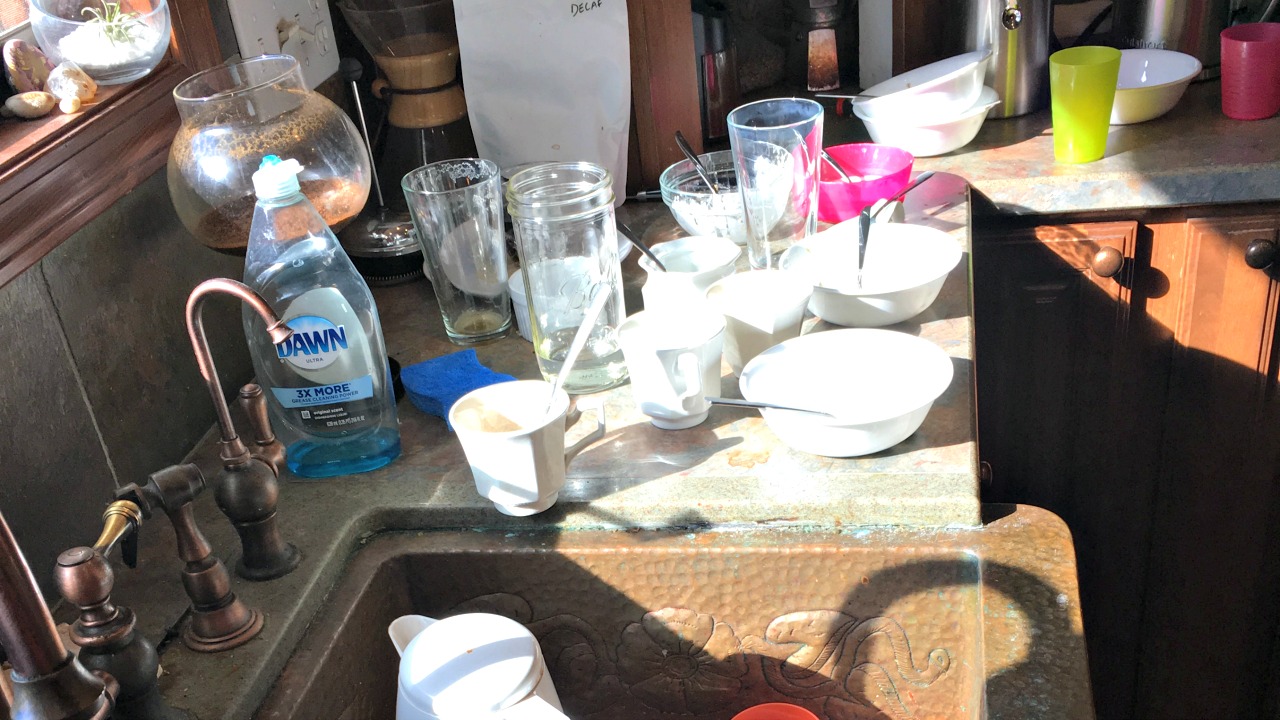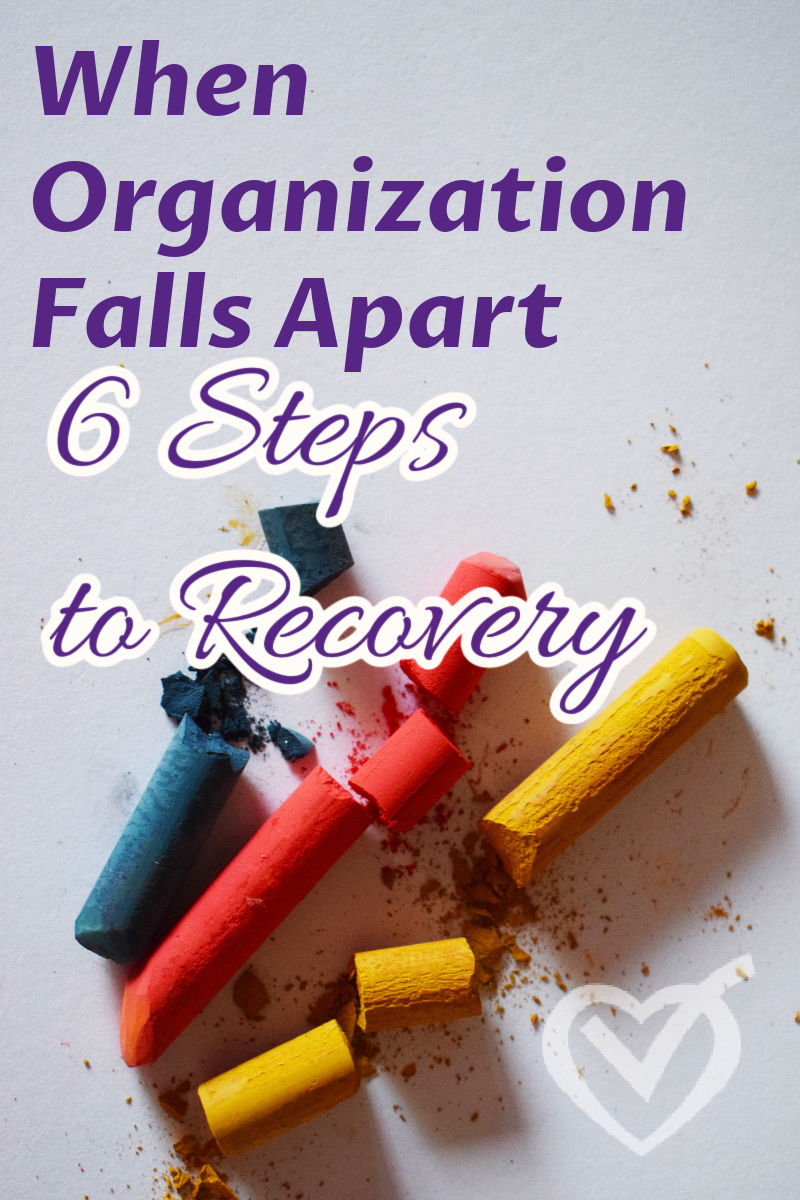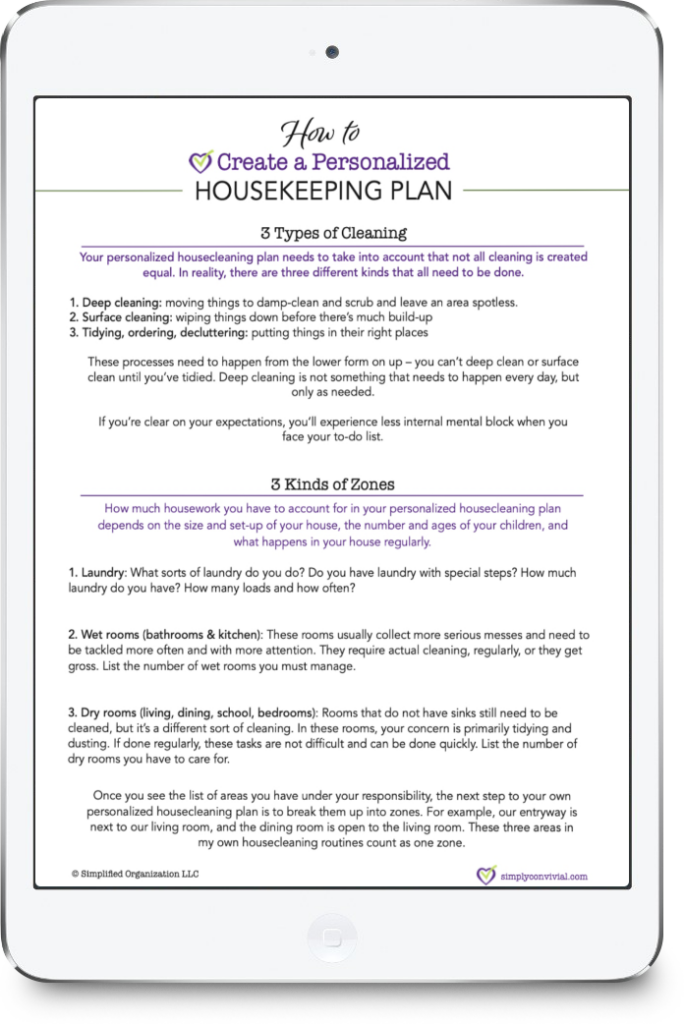The year is winding down to a close.
How are you doing? How is the state of your house? Illness strikes, an all-consuming project is due, guests come and go, daily life moves ever forward without stopping to clean up after itself.
We all have periods where things slide and chaos takes over.
#091: 6 steps to reclaim home organization
No matter how good our routines are, there are times that they slip. Everyone in the family gets a stomach bug. There’s a flurry of trips and activities in the summer leaving us no time to keep up at home. There’s bed rest or a newborn that turns everything upside down and zaps our energy. A big project or a family emergency need takes all our attention. There is no routine and no resolve that is bullet proof against such times. They will happen.
There is no organization secret that will prevent entropy.
Organization just means you know what to do to recover and you set aside the time to do so regularly.
We can recover from topsy-turvy times. It might take one or two intensive days or a week or two gradually added to. When you know it’s time to get your home back in hand, these are the steps to get there. No more floundering, not knowing where to start, feeling like it must all be done now.
Here are the steps to recovering from those times.
1. Turn the laundry mountain into a laundry molehill.
The laundry will never be done. But you can attack that humungous pile and get it into a manageable hamper.
It’s probably going to be a whole-day process, but you can’t start a routine or a maintenance plan until the backlog is taken care of. So get through the piles, cutting what corners you can, so you can start the week or weekend with clean clothes and a normal amount in the hampers.

2. Create a do-able menu plan.
Dinner comes every evening. You need a plan so that it doesn’t sneak up on you. Meals involve more than just recipes and cooking, but also grocery shopping and pantry and freezer inventorying.
There are all sorts of menu helps out there, and the best thing is simply to pick the one that works for you, then stick with it until it doesn’t.
It doesn’t have to be fancy or complicated, nor do you have to do a new dinner every night.
Related:
3. Set up or clear up your calendar and to-do list.
If you don’t already have a consistent calendar, you need to start here. You need to know your obligations and commitments. Build the habit of looking at your calendar daily, but that’s not going to help you until your calendar is clear, uncluttered, and accurate.
Whether it’s a doctor’s appointment, a coordinated phone call, a lunch date, or a gym class, you need to see the landscape of your day, of your available hours, by looking at your calendar.
Our calendars tell us what time is already spoken for. They show us what we need to prepare for. They give us the hard lines within our days.
Without a trustworthy, accurate calendar, we stare at a day planner or out the window, trying to remember if there was anything else today. We miss appointments or scramble at the last minute. We double-book ourselves or have to bail on a friend because we forgot about the orthodontist appointment.
But when we have a complete calendar, we know our commitments and can make plans confidently.
Get this handy template for figuring out your own time budget.

Related:
4. Declutter the high-use areas of your home.
A huge part of organization is simply making sure everything has a home – and then put things back in their homes. That’s a huge project, and one that takes many iterations – it might not ever be done because the new things keep coming in and the family’s needs change.
You don’t need to finish decluttering in order to recover and get back on track. You just need to tackle to worst offenders.
Look around your high-traffic, high-use areas and assess: What is here that doesn’t belong here? Move it or toss it.
Even if you just move what is getting in the way in the high use areas to a cluttered storage area, you’ll be a step closer, because you’ll be living in spaces that are decluttered. Eventually, there will come a time to tackle the back closet or the storage room or the garage, but that time is not a time when you’re just trying to get your days and home in hand after a major transition or life event.
Be satisfied with small progress. Start with getting the extra stuff out of your high use areas.
5. Clean the bathrooms and kitchen counters.
When everything feels like it’s falling apart, we often think we have to clean the whole house – and then we don’t get started because it’s too overwhelming to think about.
Instead, start with your kitchen counters (or even half of the counters) and give the bathrooms a quick once-over.
Don’t get bogged down in the perfect, thorough clean. Focus on the biggest improvements you can make in 15 minutes in one space.
Gather your supplies, set a timer, and just go at a single space for 15 minutes and stop when the timer goes off. Move to the next place and do it there.
With a time constraint, you’re forced to prioritize and do what matters most instead of getting bogged down in the details. Pick up all garbage and just toss it without analyzing or overthinking. Wipe down the surfaces and scrub off the crusty toothpaste. Squirt toilet bowl cleaner and do a quick scrub – often we imagine a job will take more time and more effort than it actually needs.
Start with a quick run-through and get the satisfaction of seeing progress right away.

6. Have a meeting with the kids.
Many factors probably went into the backsliding that caused the chaos you’re climbing out of. A step not to neglect is to not hold it against either yourself or your family, but to move on with a cheerful goodwill. A bad attitude, coupled with bitterness or resentment, will roadblock any progress that decluttering or cleaning might offer.
Sometime, outside the heat of the moment and apart from any confrontation or consequence, call a meeting with the kids – perhaps with hot chocolate or lemonade or tea.
Cheerfully get everyone back on the same page & the same team. Start with an apology for losing your temper or for losing your own self-control and make your plans and expectations moving forward clear. Get their feedback on how they think they can help or why they think doing the laundry and tidying things up is a good idea. Get them to volunteer for jobs instead of simply ordering them.
Most importantly, let them know a change is coming and that they can be a part of the progress.
Don’t spring a change in routine or intensity on them suddenly. Make them a part of the effort.
Remember what really matters.
Do these things for God’s glory rather than your own. That means that you do it to obey Him, to offer Him your best, to be better available and able to serve Him, and to steward – to care for – His blessings (your family, home, and abilities).
Once you’ve done these 6 things, you’ll feel more confident about your ability to accomplish further progress in your home.
Organization isn’t a once-and-done project; it’s ongoing management. These steps aren’t the end; they are the beginning. Once the house is recovered and your confidence is restored, you will be tempted to create a plan to reach perfection. Resist.
The goal is a home ready for use and service, not a static-clean home.
Here’s a free guide that will help you figure out the routines your home and your family needs to maintain functionality:
Make a housecleaning plan that works for YOU and your particular stage.
Download my free 3-page guide for creating a personalized housekeeping plan so you can get a handle on the daily and weekly chores particular to your current needs.
Your routines should fit your life.
This guide will help you set up housecleaning routines that work with your preferences, home, and schedule.


